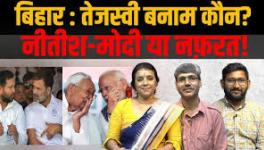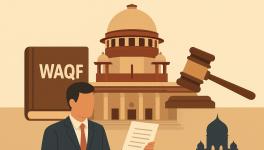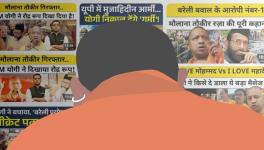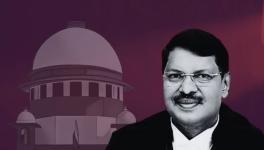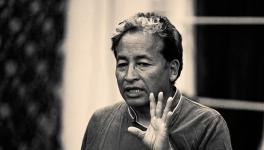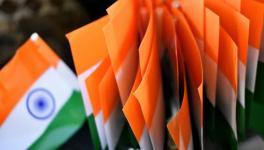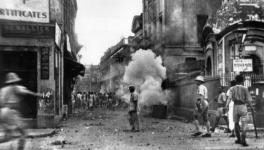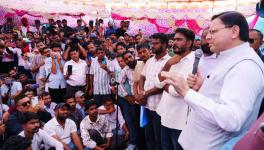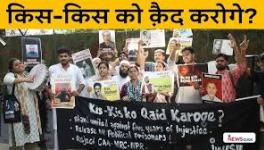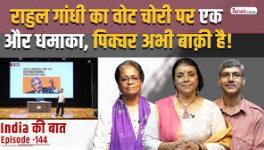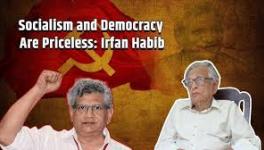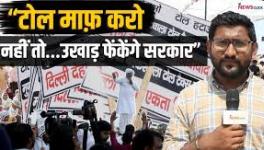5 Years of Delhi Riots: Some Punished, Some Rewarded!
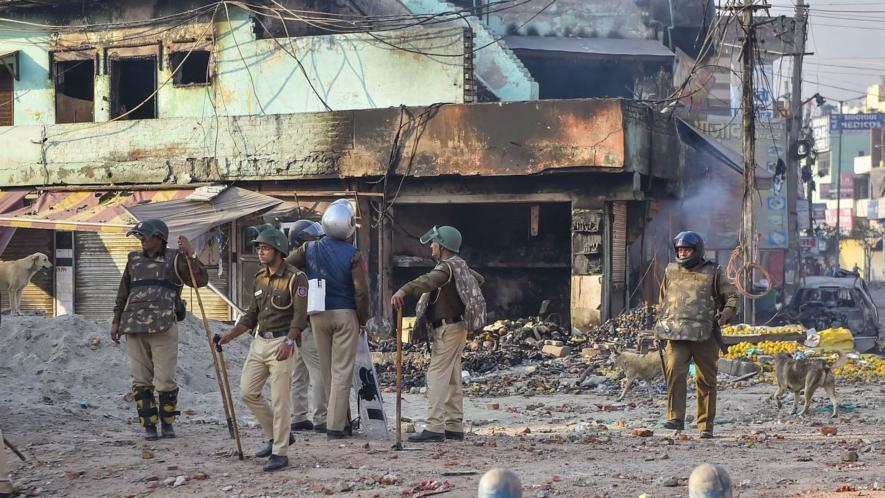
PTI file photo of the 2020 Delhi communal violence.
The wounds of the Delhi communal violence that took place five years ago, or rather the conspiracy to burn Delhi, have not yet healed…justice has not been delivered yet.
Where is justice lost…what happened in these five years? Many innocents are still behind bars and many accused are still roaming free. One of them has even become an MLA and minister on a Bharatiya Janata Party (BJP) ticket.
Five years ago, between February 23 and February 26, 2020, a conspiracy was hatched to light a communal fire in Delhi. The north-eastern part of the capital city was made the target of this attack.
About 53 people lost their lives in this communal violence. Hundreds were injured. There was huge loss of life and property in the violence that lasted for four days. Many houses and shops were burnt to ashes.
In common parlance, we call this a ‘riot’, but if the right words are used, it was an attack. A revenge against the Shaheen Bagh movement against the Citizenship Amendment Act or CAA. Statistics testify this.
Delhi Police figures say that among those killed, 40 were Muslims and 13 were Hindus.
Unfortunately, the government and the mainstream media largely reported one-sided stories and blamed the Muslim community for this violence. This is what is being propagated even today.
As per the Special Cell and Crime Branch of Delhi Police, there was a “deep conspiracy” behind the Delhi riots, the “foundation of which was laid” during the anti-CAA and NRC protests in 2019.
This conspiracy has been mentioned in case number 59/2020. Delhi Police considers former JNU student leader, Umar Khalid, as the “mastermind” of the Delhi violence.
Special Public Prosecutor Amit Prasad has argued that the violence was part of a conspiracy to create trouble during the visit of then US President Donald Trump to India.
The violence started in Jaffrabad in North East Delhi, where women were staging a sit-in protest against the CAA on the Seelampur-Jaffrabad-Maujpur Road.
At that time, the freshly minted BJP leader, Kapil Mishra (who had switched over from the Aam Aadmi Party), called upon Delhi Police to clear the streets, and threatening to do so himself with the help of his supporters. It is after this that the violence broke out.
Recall that despite all their efforts, BJP had badly lost in the Assembly elections held in February 2020. Many analysts say that the stunning defeat had flustered BJP. (This year that defeat has been avenged. After 27 years, BJP has once again come to power in Delhi with full majority.)
The backdrop of the communal violence had already been created, but ultimately it is innocent people who became its victims.
In 2022, four former judges and a former Home Secretary had released a fact-finding report on the reality of the Delhi violence. The report had raised serious questions on the investigation by Delhi Police. Also, strong comments were made on the role of Union Home Ministry, Delhi government and the media.
The fact-finding report also found that speeches made by BJP leaders like Kapil Mishra had also played a role in instigating people, which led to the violence.
Social activist Harsh Mander had even filed a petition in Delhi's Patiala Court saying that an FIR should be registered against Kapil Mishra. This petition is still pending in the court.
Notably, in July 2020, Delhi Police had told the Delhi High Court that no evidence had been found against Kapil Mishra and other BJP leaders’ speeches having instigated the violence.
The same Kapil Mishra has now become an MLA and minister by contesting the recent Delhi Assembly elections from Karawal Nagar on a BJP ticket. But there is no discussion in the media about his role in the 2020 communal violence.
According to various media reports, the police have registered a total of 758 FIRs related to the violence.
Some reports published in 2024 said a total of 2,619 people had been arrested, out of which 2,094 people are out on bail.
The court has so far found only 47 people guilty and has acquitted 183 people. Cases against 75 people have been dismissed due to lack of sufficient evidence.
Delhi Police has so far arrested at least 24 people, of which 10 have been released on bail in the case of Head Constable Ratan Lal, who was killed in the line of duty during the Delhi violence.
Also, the 11 accused arrested in the murder case of Ankit Sharma, who worked in the Intelligence Bureau, are still in jail. Sharma's body was found in a drain in Chand Bagh on February 26, 2020.
Notably, the fact-finding report has put its finger on another accused in the Delhi violence -- Delhi Police. Questions have been raised on the role of Delhi Police in allowing these riots to happen and for inaction and delay in stopping the violence. Besides, Delhi Police have also been accused on brutalities.
Hearing in a case related to the Delhi riots in September 2024, a court had acquitted 10 accused persons, raising questions on the 'theory' of Delhi Police. All the accused belonged to the Muslim community. They were accused of attacking a house and a shop in Gokulpuri police station area of North East Delhi.
Additional Sessions Judge Pulastya Pramchala of Delhi's Karkardooma Court had said that “suspicions over the allegations against the accused are not beyond doubt.”
During these four-five years, there were many such occasions during the hearing in the court, when the court made harsh remarks on the Delhi Police and described the level of their investigation as poor.
In August, 2023, while hearing the arrest of three people in the case of rioting in FIR No. 71/20 case of Dayalpur Police Station, Karkaduma Court had commented that the incidents had not been properly and completely investigated. It noted that the charge sheet in the case had been filed with prejudice in a bid to hide the mistakes made in the beginning.
Because of this kind of investigation and attitude of the police, many youth are still languishing in jail.
In November 2024, the Supreme Court refused to grant bail to Delhi riots accused Gulfisha Fatima, but asked the Delhi High Court to hear her bail petition soon. Senior advocate Kapil Sibal, appearing for Gulfisha, had said that she had been in jail for four years, and her bail petition had been pending in the High Court for a long time.
Earlier, on October 25, 2024, the Supreme Court had given a similar order in the case of another riot accused, Sharjeel Imam.
However, in March 2022 itself, councillor Ishrat Jahan, an accused in the violence, got bail. She was arrested by the Special Cell of Delhi Police under UAPA (Unlawful Activities Prevention Act).
The bail petition was filed in the court on behalf of former Congress councilor Ishrat Jahan, which said that the police did not have a single evidence against her.
Earlier, in June 2021, Delhi High Court had granted bail to Pinjra Tod activists Devangana Kalita, Natasha Narwal and Jamia student Asif Iqbal Tanha, who were arrested under UAPA Sections on charges of rioting.
At that time the High Court had said that giving inciting speeches or blocking roads is not unusual when there is widespread opposition to the actions of the government and Parliament. Even if we assume that the alleged inflammatory speeches, ‘chakka jam’, inciting women to protest and other acts, even if these violate the limits of the right to peaceful protest given in the Constitution, the act cannot be termed as a terrorist act, its conspiracy or its preparation.
Alas, Umar Khalid did not get bail or such comments.
Delhi Police's Special Cell and Crime Branch consider Khalid to be the ‘mastermind’ of the Delhi violence. He has been in jail since September 2020. He has been charged with terrorism, rioting and criminal conspiracy under UAPA. The trial in this case has not started yet.
Umar Khalid's bail plea has been rejected twice by two different courts, and hearings on his case have been adjourned umpteen times.
Khalid’s bail plea remained pending in the Supreme Court from May 2023 to January 2024, but the debate on it could not be started even once. After this, he withdrew his bail application from the Supreme Court and went back to the trial court.
On February 20, 2025, Khalid’s bail plea was heard in the Delhi High Court. During the hearing, his lawyer told the HC that merely being a member of a WhatsApp group was not evidence of involvement in any crime.
His lawyer Trideep Pais told the court that Khalid had been in custody as an undertrial for a long time. He said that the delay in the trial was also a reason due to which Khalid should get bail. The senior advocate argued that on the basis of equality with the four accused in this case who have been granted bail, Khalid should also be granted bail.
The bench headed by Justice Naveen Chawla has now ordered the next hearing on Khalid’s bail plea on March 4.
So, if we look at how justice has progressed in these five years, it can be said that while one set of accused -- Umar Khalid or Gulfisha or Sharjeel Imam -- has not got bail yet, And one of the accused (although Delhi Police does not consider him an accused) Kapil Mishra has become an MLA and the Law and Justice Minister in the Delhi government. Along with this, he has got charge of Development, Art and Culture Department, Language Department, Tourism Department, Labour Department and Employment Department.
The session of the new Delhi Assembly has started. It would be fitting if a report on the progress of investigation in Delhi riots is tabled so that the country knows what the police under Home Minister Amit Shah did for justice in these five years.
(Translated from the original article published on Newsclick’s Hindi website)
Get the latest reports & analysis with people's perspective on Protests, movements & deep analytical videos, discussions of the current affairs in your Telegram app. Subscribe to NewsClick's Telegram channel & get Real-Time updates on stories, as they get published on our website.









